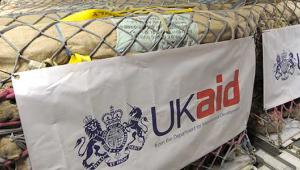This is having a negative impact on the ability of the global community to finance the Sustainable Development Goals, for which public-private – or blended – financing is a key element, according to the Blended finance: Understanding its potential for Agenda 2030 report.
The review, published today by Development Initiatives, an international research organisation, focused on the use of public funds to de-risk or ‘leverage’ private investments in development.
Concerns have been raised that such blended finance schemes do not do enough to ensure donations benefit the right people and projects. As such, the report found that private investments mobilised by blended finance grew by around 20% per year between 2012 and 2014. By contrast, official development assistance grew by 3.5% per year over that period.
It also found that blending finance alone will not be sufficient to address the large funding gap facing the SDGs, thought to be as much as $3.1tn annually. Based on current annual growth rates, the amount of private capital mobilised by blended finance would total $252bn by 2030.
Despite the need for greater investment to reduce the SDG funding gap, the report flagged several serious issue as regards to monitoring and transparency. It found that there is no common reporting system for donors to publish information on their investments in these schemes, and commercial confidentiality can limit the information reported on the companies or initiatives that are invested in.
From the limited data available, the report finds that blended finance tends not to benefit the countries or sectors where poverty is greatest. Therefore, the use of such an approach to achieve the SDG “must be carefully considered”.
Many countries that face the toughest challenges in achieving the SDGs, in particular, countries with high poverty rates and low government revenue, receive little or no investment from blended finance. For example, lower income countries that received private capital investment through blended finance each received an average $62m of this type of finance between 2012 and 2014. Equivalently, lower middle-income countries received $370m, and upper-middle income countries received $392m.
Moreover, the majority of private capital mobilised through blended finance is directed to the energy, industry, mining, construction and banking sectors. Between 2012 and 2014, these sector received two-thirds of private capital mobilised through blended finance. Other sectors such as education, water and sanitation, which face large funding gaps in relation to the SDGs, receive relatively little investment through this channel.
The report urged development organisations to improve the transparency of blended finance..
Harpinder Collacott, executive director at Development Initiatives, said that while new funding for the SDGs was vital for their success, “unfortunately, the information available about investments in blended finance is just too limited for good decision-making”.
Collacott added that it was hard to be sure how to scale up aid investments in this area, while ensuring it was having the desired impact. “We don’t know enough about the role it can play, particularly on poverty eradication… and we don’t have the data we need to understand the comparative advantages of this form of finance against other resources.”













